Design in an Age of Crisis: London Design Biennale responds to today's crucial issues
London Design Biennale and Chatham House have held an open call to gather proposals and the results are in. The 500 submissions span over 50 countries and six continents, highlighting important issues (and possible solutions) in the fields of health, environment, society and work

Creativity and crisis make for strange bedfellows. Yet, innovation proves itself best borne out of necessity as London Design Biennale and think-tank Chatham House address some of the most critical issues facing contemporary society with their new collaboration, Design in An Age of Crisis.
Launched this January, the digital platform effectively comprises a great meeting of the minds, poised to play an integral part in spotlighting the local iterations of far-reaching issues, encouraging radical design thinking and fostering dialogues between designers, policymakers and the public. The initiative is decidedly global and inclusive with 500 submissions spanning over 50 countries and 6 continents, each a response to an open call with four categories: health, environment, society and work. ‘The range of ideas illustrates how anyone, anywhere can contribute to design thinking’, says Victoria Broackes, Director of London Design Biennale, who views the exercise as a celebration of the survival of creativity with individuals continuing to form ideas even whilst at home during the pandemic.
London Design Biennale’s most ambitious presentation yet offers an unequivocal opportunity to practically reimagine our world. As Covid-19 continues to rage, the strain on the global community has highlighted issues outside of the pandemic that also demand address. Design in An Age of Crisis speaks to a world that will still be in need, even after coronavirus, ultimately presenting an opportunity for us to propose a world we want, in the face of one dealing with many crises.
After pandemic-related postponements in 2020, London Design Biennale will return to Somerset House this June to showcase a selection of highlights from Design in An Age of Crisis. Here, we look at some of the projects from the initiative's four categories.
Environment

An example of the Pop-up ecosystems in Paris, by MuDD Architects and AirLab
As confinement and social restrictions take their toll on the mental health of many across the globe, Pop-up Ecosystems by MuDD Architects and AirLab in Spain proposes a design that will safeguard our mental wellbeing as well as protect our environment. Effectively changing the shape of our urban landscapes, it offers innovative techniques for attaching green spaces to existing buildings to promote positive health.
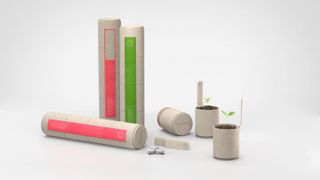
PriestmanGoode's TURF Growers Pack
PriestmanGoode’s Guy Genney designs a greener world with a strong sense of community with TURF, an app that facilitates for people to grow their own food and share surplus with neighbours and local businesses. The project includes a selection of items (in a zero-waste, biodegradable pack) needed to get started growing edible plants from home.
Work
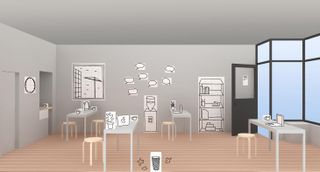
An example of Out of (Paper) Office by Brown Office and Jon Abbott Studio
Work cultures have undoubtedly changed as a result of the pandemic, so it is no surprise that some submissions have attempted to address our new realities, with some suggesting ways to reclaim unused spaces such as Out of (Paper) Office, a playful set of printable office prop templates by Brown Office and Jon Abbott Studio. The Work from Home Clock by Wareesa Lakanthampichit offers a practical way to organise time around work, leisure, rest, family and friends while working remotely. The digital project helps visualize a 24-hour period to better coordinate colleague interaction as well as personal time.
Health

Part of the London Orchestra from Waste Materials is this steel slide-guitar, made from welded cooking oil drums.
London Orchestra From Waste Materials, a project by Andrew Scott from the Royal College of Art in collaboration with composer Hangrui Zhang from the Royal College of Music, aims to promote wellbeing through music and uses repurposed waste materials to do so.
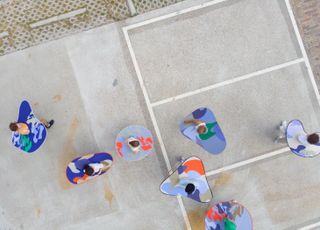
Eindhoven student Anna-Sophie Dienemann addresses coronavirus restrictions and the direct impact on people's everyday lives with Bounding Spaces, a playful wearable aid to social distancing.
Society

A view of 'everyday Life around a water body', part of the Aqueous Communes project by Mad(e) in Mumbai. The structures are designed so that Monsoon seasons don't impact the community's life
Responding to issues around social identity, community and survival, Aqueous Communes by Mad(e) in Mumbai is a design that not only offers low-cost flood resilient housing for the Sonbarsa village in India, but also recycles the flood water to the benefit of the community.
Wallpaper* Newsletter
Receive our daily digest of inspiration, escapism and design stories from around the world direct to your inbox

From the Radical Gravity project, an example of an on-the-spot settlement, inhabited by people whose houses were destroyed after a natural disaster
Radical Gravity by Angelina Kozhevnikova, Kyungha Kwon and Konuralp Senol looks at some of the failures of the pandemic, which highlighted inadequacies in our emergency response systems. The project proposes an innovative, self-sustaining global system that provides airdrop shelters in the wake of natural disasters, using freefall as a self-building stage.
INFORMATION
-
 Ama Bar, in Vancouver, is sexy and a little disorienting
Ama Bar, in Vancouver, is sexy and a little disorientingAma Bar features ‘Blade Runner 2049’-inspired interiors by &Daughters
By Sofia de la Cruz Published
-
 Kembra Pfahler revisits ‘The Manual of Action’ for CIRCA
Kembra Pfahler revisits ‘The Manual of Action’ for CIRCAArtist Kembra Pfahler will lead a series of classes in person and online, with a short film streamed from Piccadilly Circus in London, as well as in Berlin, Milan and Seoul, over three months until 30 June 2024
By Zoe Whitfield Published
-
 Monospinal is a Japanese gaming company’s HQ inspired by its product’s world
Monospinal is a Japanese gaming company’s HQ inspired by its product’s worldA Japanese design studio fulfils its quest to take Monospinal, the Tokyo HQ of a video game developer, to the next level
By Ellie Stathaki Published
-
 ‘R for Repair’ at London Design Festival displays broken objects, re-formed
‘R for Repair’ at London Design Festival displays broken objects, re-formedIn the second half of a two-part exhibition and as part of London Design Festival 2022, ‘R for Repair’ at the V&A displays broken objects, re-formed
By Martha Elliott Last updated
-
 ‘Finding quality through the act of making’: Pearson Lloyd celebrates 25 years of design
‘Finding quality through the act of making’: Pearson Lloyd celebrates 25 years of designPearson Lloyd’s show ‘Change Making’ reflects on past designs from its archives, showcasing the influences on and evolution of the studio, from furniture design to the NHS
By Martha Elliott Last updated
-
 Tom Dixon marks his studio's 20 years with a show of design experiments
Tom Dixon marks his studio's 20 years with a show of design experimentsMushroom, cork, steel coral and more: Tom Dixon showcases an overview of his design experiments as he celebrates his practice's 20 years
By Rosa Bertoli Last updated
-
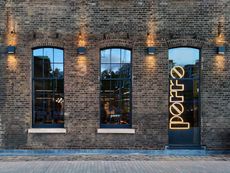 Porro unveils new London showroom at Coal Office
Porro unveils new London showroom at Coal OfficeLondon Design Festival 2022: industrial architecture meets pure geometries in the new Porro showroom, taking over a space within Tom Dixon’s Coal Office to showcase the brand’s systems and furniture
By Rosa Bertoli Last updated
-
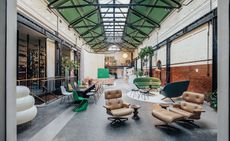 Vitra unveils new London home in the Tramshed, Shoreditch
Vitra unveils new London home in the Tramshed, ShoreditchLondon Design Festival 2022: after a year-long renovation, Vitra opens the door to its new showroom in the heart of Shoreditch
By Rosa Bertoli Last updated
-
 Mudlarking beside the River Thames inspires The New Craftsmen’s makers
Mudlarking beside the River Thames inspires The New Craftsmen’s makersLondon Design Festival 2022: The New Craftsmen’s new collection, ‘Claylarks’, features work from a group of creatives inspired by a River Thames mudlarking expedition
By Mary Cleary Last updated
-
 One tree, ten designers: SCP presents The One Tree Project at London Design Festival
One tree, ten designers: SCP presents The One Tree Project at London Design FestivalLondon Design Festival 2022: SCP enlisted ten British designers to create furniture and objects from a felled ash tree from founder Sheridan Coakley's Hampshire garden
By Francesca Perry Last updated
-
 London Design Medals 2022
London Design Medals 2022London Design Medals 2022 are awarded to costume designer Sandy Powell, architect Indy Johar, researcher Joycelyn Longdon and photographer Sir Don McCullin
By Rosa Bertoli Last updated